You’ve probably got your hiking checklist down to an art. Pants? Check. Boots? Double-check. But have you thought about packing a knife? You may think that it’s an overkill, but in reality it’s not.
In fact, I’d go as far as to say a knife is necessary, especially if your path leads you through demanding terrains and remote locations.
But even if you’re just planning a hike through well-trodden paths, equipping yourself with a reliable hiking knife is a smart move, simply because it provides peace of mind.
You’ll have a tool that can help you with creating a makeshift shelter, preparing a snack, or (heaven forbid) dealing with an emergency situation.
We’ll uncover the best hiking knives that we tested over the years to make sure you’re prepared even for the most unexpected situations.
What Are the Best Hiking Knives for Hiking?
Best Overall/Best Fixed Knife: Gerber StrongArm Serrated Fixed Blade Knife | Check Price
Best Folding Knife: Benchmade 15085-2 Mini Crooked River Fine-Edge Knife | Check Price
Best on Budget: Opinel No. 8 Beechwood Handle Knife | Check Price
Best Swiss Army Knife: Swiss Army Huntsman Knife | Check Price
Best Lightweight: Benchmade 535GRY-1 Bugout Drop-Point Fine-Edge Knife | Check Price
Honorable Mention: Gerber Swagger Drop Point Knife | Check Price
Gerber StrongArm Serrated Fixed Blade Knife
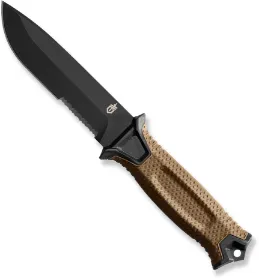
KEY FEATURES
PROS
CONS
If I had to pick just one knife to take with me on my hikes (especially those shorter ones), this would be Gerber StrongArm.
With a 4.8 inches partially serrated blade length, it’s the perfect size for all kinds of tasks you might need to tackle outdoors. From cutting rope to slicing through tough material. The serrated edge is a breeze to sharpen too.
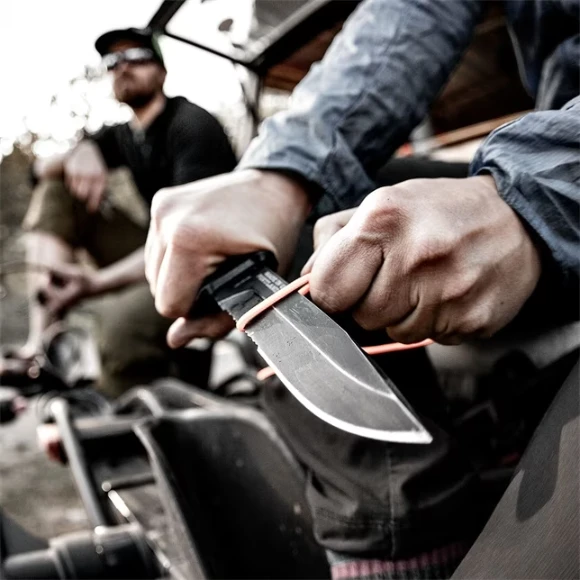
I’ve handled my fair share of knives, but the full tang strength of the StrongArm is something else. It’s ideal for batoning wood, making it a must-have for those nights when you’re trying to get a fire going.
Speaking of fires, the sharp 90-degree angle on the blade’s spine is perfect for striking a spark from a ferro rod. How cool is that?
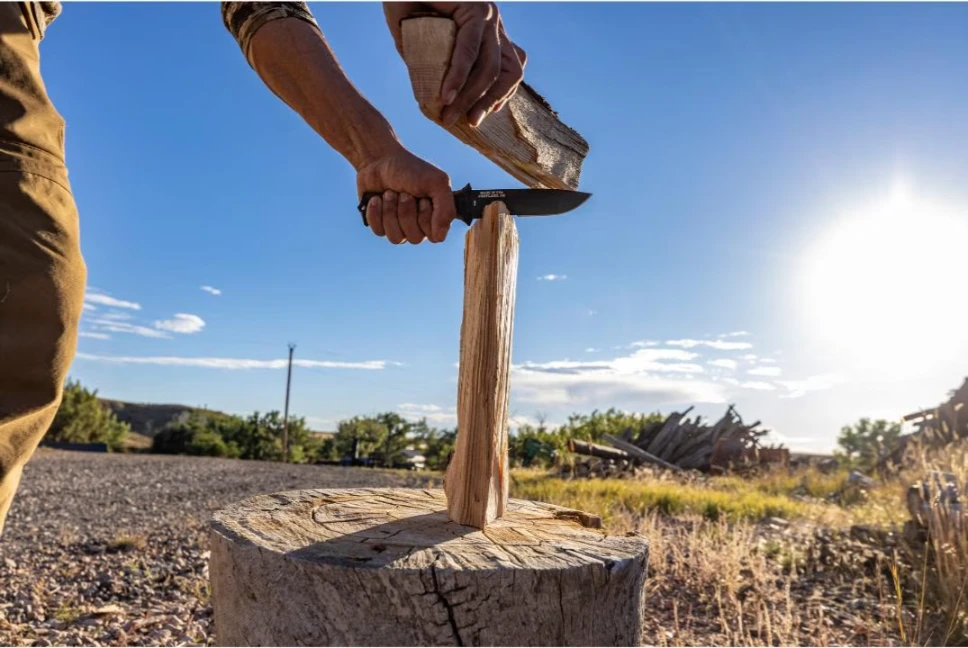
The handle is made from glass-filled nylon with a rubber overmold, which gives you an incredible grip even in the slipperiest conditions. Ever tried holding onto your knife in the rain or with gloves on in the cold? No problem for the StrongArm.
A big selling point for me – and I think you’ll appreciate this too – is the sheath’s retention. It’s designed so the knife stays put even when you’re upside down. Ideal for when you’re climbing or in tricky situations.
The holder might take a minute to figure out, but once you do, it’s easy to attach and detach the knife at a moment’s notice.

Are there any downsides? Well, the black coating on the blade might scrape off after heavy use. But honestly, that’s hardly a deal-breaker considering everything else this knife offers.
At 10.9 ounces, it’s the heaviest knife in our ranking. Thanks to its weight, it feels solid and reliable in my hand, giving me confidence with every use. However, I’d not take this knife on an ultralight backpacking trip, for example.
Verdict
Built in Portland, Oregon by Gerber, a company renowned for their top-notch knives, priced at $90, and boasting a 4.6 out of 5 stars rating on REI – it’s hard not to be impressed. The StrongArm is a reliable, durable, and versatile knife that excels in any outdoor situation.
Benchmade 15085-2 Mini Crooked River Fine-Edge Knife
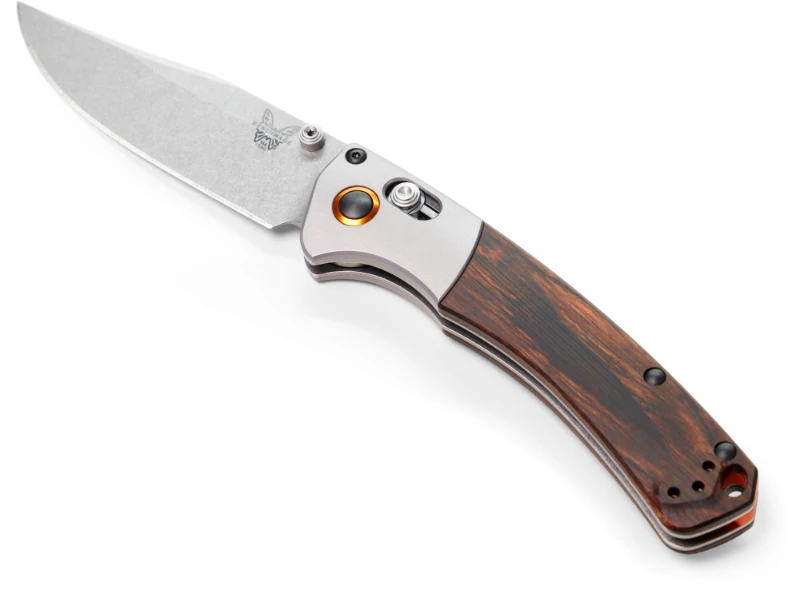
KEY FEATURES
PROS
CONS
The heart of any knife is its blade, and the Mini Crooked River shines with its 3.4 inches straight edge blade. It’s not too long, not too short, just right for precise cuts.
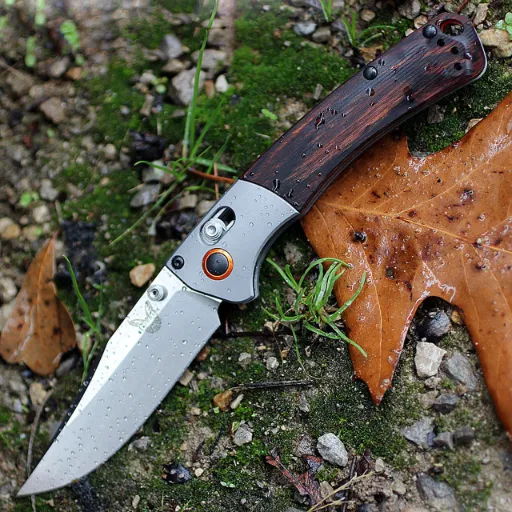
Made from CPM-S30V stainless steel, this blade is very sharp right out of the box. But even if it starts to dull on you, Benchmade has your back with their free sharpening service.
The handle combines stabilized wood with anodized aluminum, giving you a classic look with modern durability. Even though the blade is only slightly shorter than the width of my hand, I can still get a full grip on it.
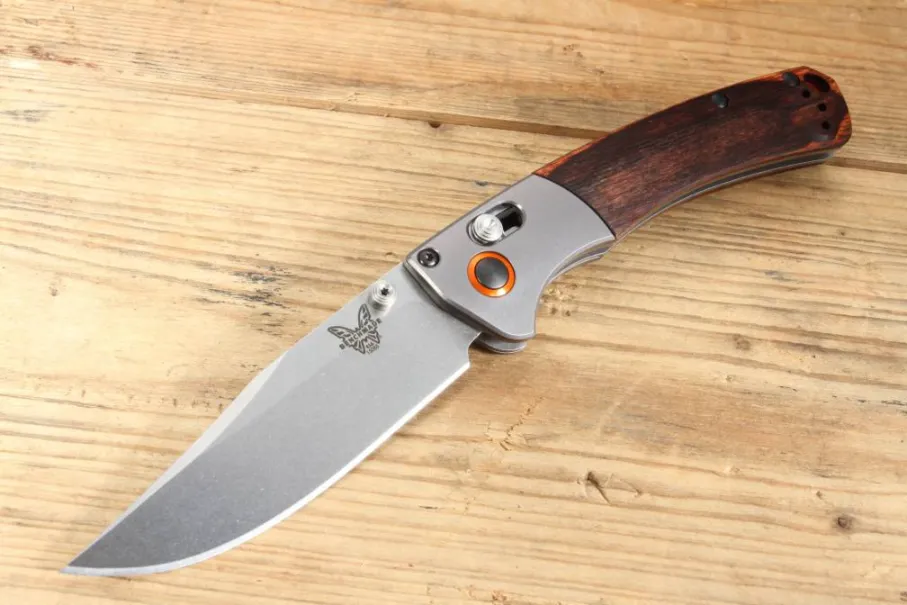
Ever found yourself needing to open your knife but your other hand is busy holding onto a rope or a branch? The Mini Crooked River has you covered with its one-handed opening mechanism. Initially, it might feel a bit stiff, but give it some time. It loosens up and becomes smooth to operate, which is exactly what you need when you’re out in the wild.
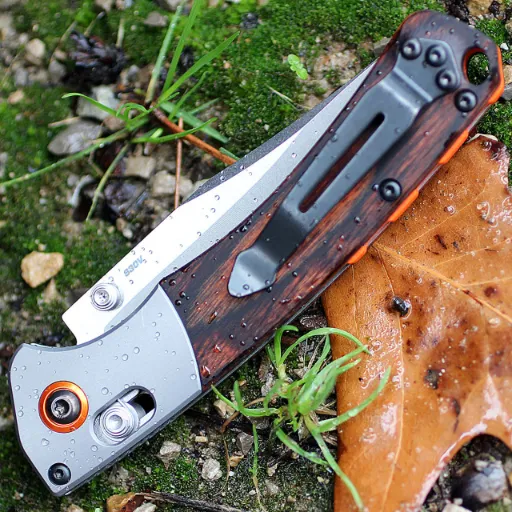
At just 3.3 ounces, this knife won’t weigh you down. This knife adds negligible weight to your gear but brings a ton of value and utility.
Priced at $270, it sits at the higher end of the spectrum. It’s an investment, for sure. But remember, good gear lasts. And with Benchmade’s reputation for quality and their sharpening service, it’s an investment that pays off in the long run.
Verdict
The Mini Crooked River is beautifully designed, super slender in the pocket, and doesn’t scream “I’m carrying a knife!” It’s the perfect blend of a reliable outdoor tool that won’t look out of place even in an office setting.
With a 4.6 out of 5 stars rating on REI, it’s clear that this knife is a popular choice in the hiking community.
Opinel No. 8 Beechwood Handle Knife
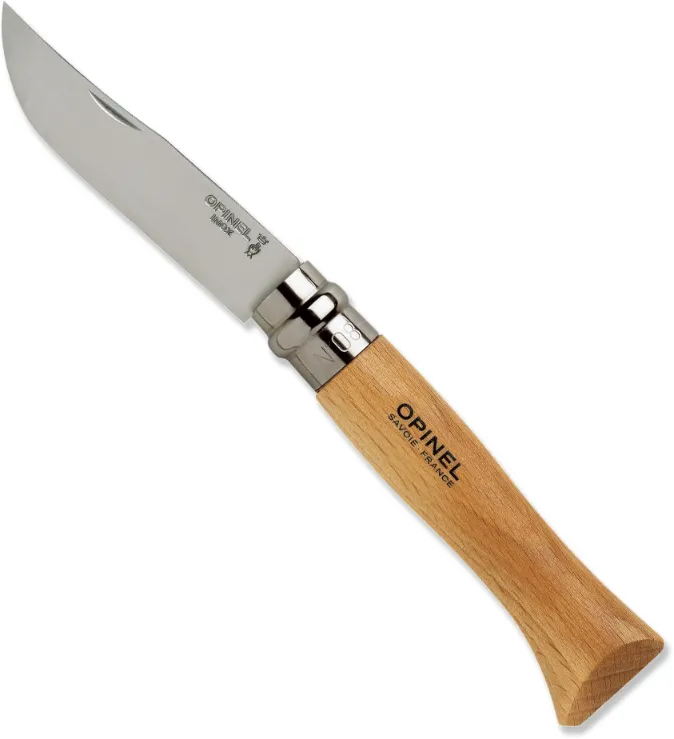
KEY FEATURES
PROS
CONS
The Opinel No. 8 isn’t just any knife. It’s a piece of history, designed with simplicity and efficiency in mind. Let’s talk about what makes this knife stand out, especially for us hikers.
The 3.25 inches of cutting power is perfect for everything from slicing through a tough rope to preparing a snack on the trail. The blade’s length strikes a fine balance – long enough for utility, yet compact enough to carry without a second thought.
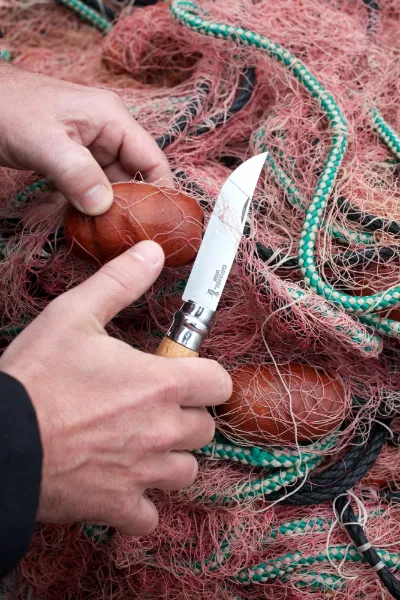
The beechwood handle is lightweight (the knife weighs in at just 1.5 ounces) and feels balanced. However, remember, beechwood has its quirks. It can get slippery when wet and might expand or shrink with humidity changes, affecting the blade’s movement.

The Sandvik stainless steel blade material is top-notch, offering corrosion resistance and maintaining a sharp edge without being overly brittle. It’s not going to slice through paper like more expensive knives in our ranking, but for under $20, it’s impressively sharp.
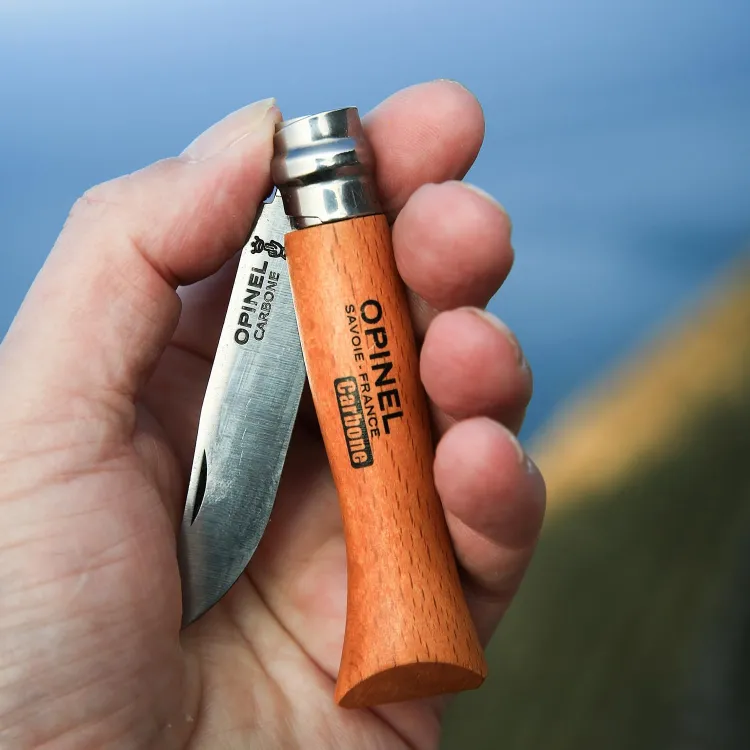
Verdict
Should the Opinel No. 8 find a place in your hiking gear? If you value simplicity, efficiency, and a bit of tradition, then my answer is a resounding yes.
Preparing meals, cutting twine, or even whittling a bit of kindling, this knife has been up to the task. Its straightforward design means there’s less that can go wrong. No fancy mechanisms to jam or break – just a reliable blade that’s there when you need it.
Swiss Army Huntsman Knife
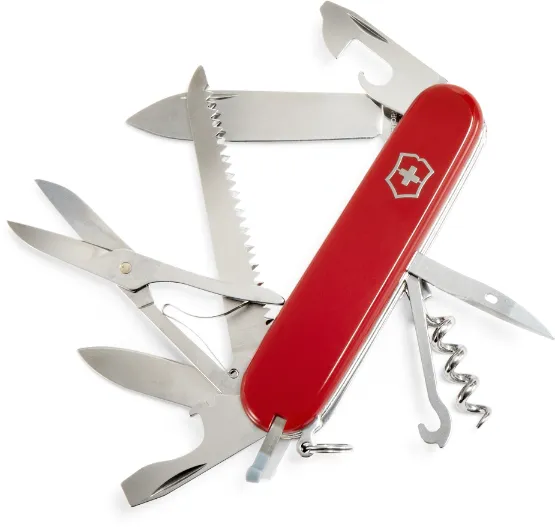
KEY FEATURES
PROS
CONS
Crafted by the Victorinox of Switzerland, this tool is a true companion. It has an impeccable rating of 5 out of 5 stars based on over 60 reviews on REI. The reason? It’s extremely durable. Some folks have had theirs for 50-60 years, and it’s still going strong. Victorinox even backs it up with a lifetime guarantee.
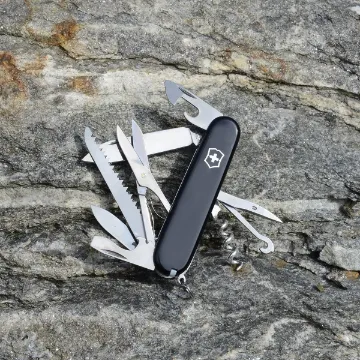
The Huntsman comes with two blades, with the longest being 2.5 inches. It folds down to a neat 3.5 inches, making it the perfect fit for any pocket or to clip onto a belt with a carabiner.
Made from stainless steel and sporting a handle of acid-resistant plastic/aluminum, this knife is built to last. Weighing in at just 4 ounces, it’s like it’s not even there – until you need it.

The Huntsman has got you covered with blades that are sharp enough to cut some rope or maybe trim down a small branch for your fire. And if you’ve ever needed to tighten a screw on your gear or get rid of a pesky splinter, this multitool is perfect for those kinds of tasks as well.
Its rounded edges mean you can slip it into your pants pocket without a second thought, but I usually keep mine in one of my backpack hip pockets. It’s just easier to grab that way.
The only downside I’ve noticed is that the color can fade over time. But honestly, when a tool does so much, that’s hardly a problem.
Verdict
Are you looking for a small, functional multi-tool that can handle almost anything the trail has prepared for you? Then I can’t recommend the Swiss Army Huntsman Knife enough. Priced at $52, this tool has been my go-to for years.
Benchmade 535GRY-1 Bugout Drop-Point Fine-Edge Knife
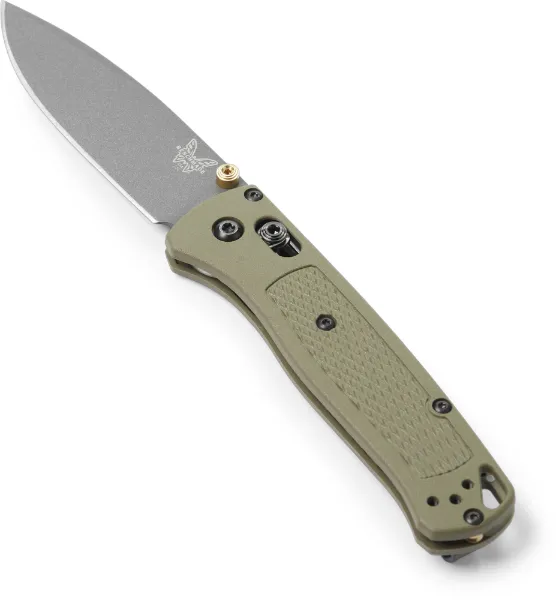
KEY FEATURES
PROS
CONS
First things first, this knife is super light. We’re talking a mere 1.8 ounces light. To put that into perspective, it’s lighter than the smartphone you’re probably holding. Despite its weight, this knife is as sturdy as they come, perfect for everything from preparing a snack to cutting through unexpectedly tough bits of rope.
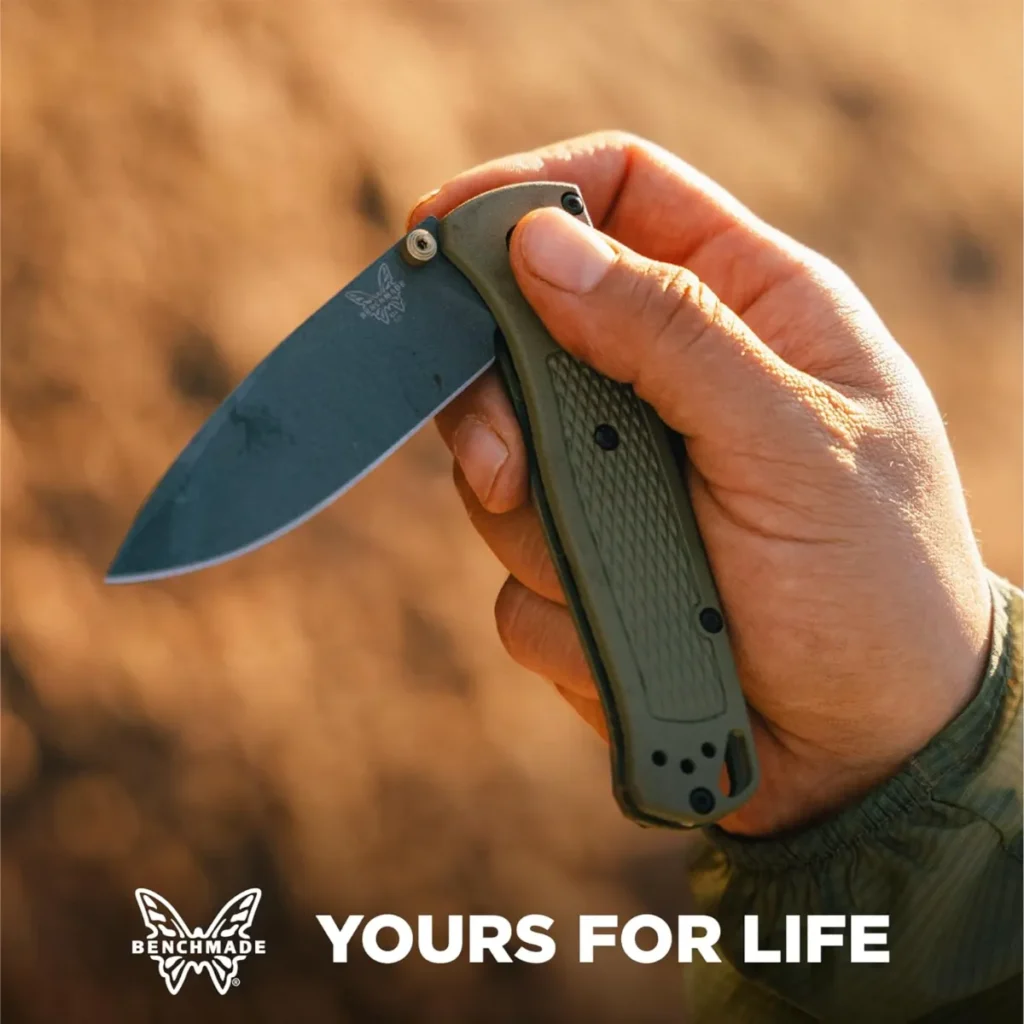
The blade is made from CPM-S30V stainless steel and it comes razor sharp right out of the box, ready to tackle anything. With a straight edge and a max length of 3.24 inches, it’s the ideal size for precision and control without being too bulky.
The handle is made from grivory, which is a material that offers incredible durability without adding weight. The handles are a bit flexy if you give them a good squeeze, but when you’re using the knife as intended – for cutting – this flexibility doesn’t come into play.
Instead, what you’ll notice is how comfortable it feels in your hand, even after extended use.

One feature I absolutely must highlight is the one-handed opening. Being able to flick your knife open with just a thumb is much-needed on the trail. Add to that a super solid lock that ensures safety and stability, and you’ve got yourself a knife that’s both practical and reliable.
Verdict
The Benchmade Bugout Knife is the kind of gear that quietly makes your life easier. It’s designed to be an ideal EveryDayCarry (EDC) knife, meaning it’s built for the everyday world, whether that’s slicing open those stubborn packaging seals or preparing kindling for a fire.
Gerber Swagger Drop Point Knife
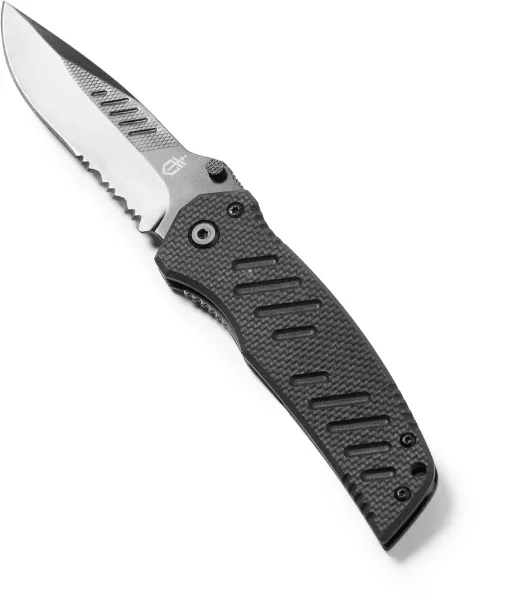
KEY FEATURES
PROS
CONS
Priced at only $37, it’s hard to find another EDC knife that offers so much bang for your buck. It offers solid build and reliable performance.

Weighing in at 4.4 ounces, it’s got a heft to it that feels reassuring when held. The partially serrated blade stretches up to 3.25 inches and is housed in a 4.3-inch closed length body. It’s compact enough to slip into your pocket, yet robust enough to handle all unexpected tasks in the wilderness.
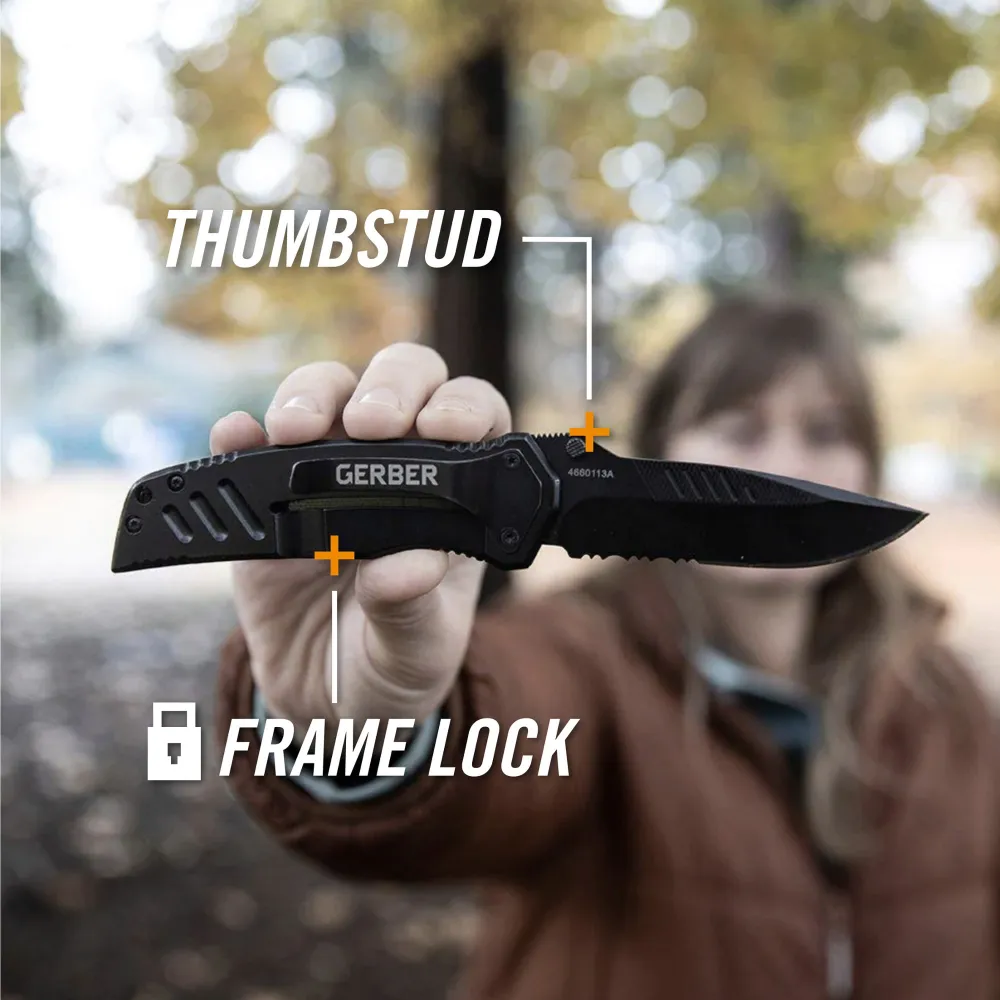
The handle is a blend of G-10 and stainless steel. This combo looks good and offers a grip that feels confident in your hand, even in wet conditions.
With a one-handed opening feature, you can flick it open, even when your other hand is busy holding onto a climbing rope or balancing you on a steep incline.
However, the release mechanism for the blade lock, while simple, can be a bit finicky. There have been moments when it’s felt resistive, posing a challenge when you need to close the knife quickly.
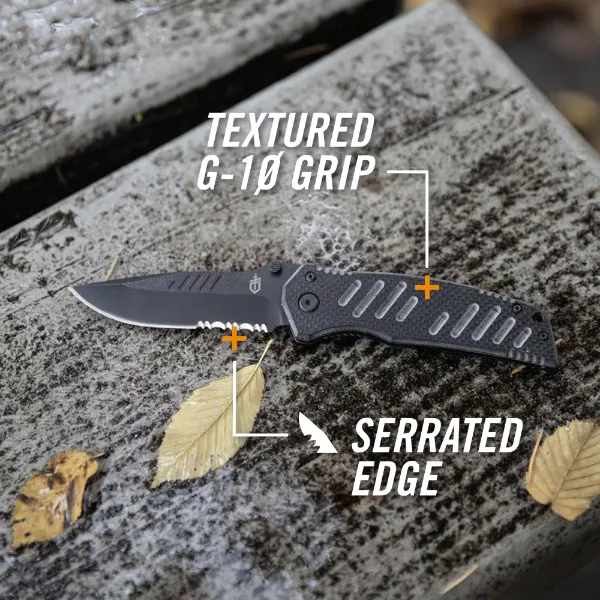
Verdict
Overall, the Gerber Swagger is a great EDC knife for its price. It offers solid construction, reliable performance, and convenient features that make it stand out among other knives in this price range.
While there may be some minor issues with the locking mechanism, as long as you keep your knife clean and well-maintained, you won’t have any major problems.
What Is the Knife for In Hiking?
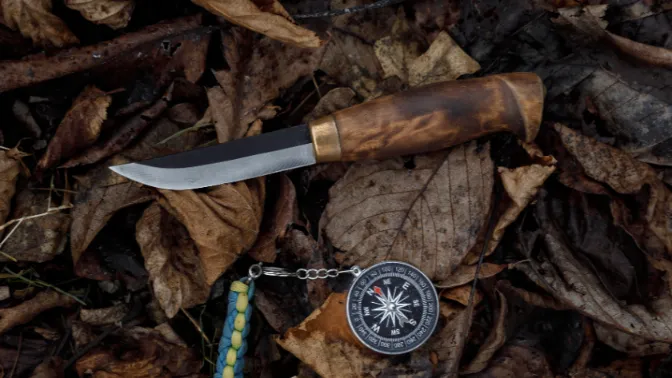
Whether you are hiking alone or with a group, it’s always important to have a knife on hand for emergency situations. You can use it to cut bandages, make splints, or even start a fire.
A dependable knife is equally useful when you need to make a quick fix on your gear. Maybe a strap snapped, or you had to adjust new hiking poles you were trying out. A knife can come in handy for these situations.
And if you’re planning a longer hike or a backpacking trip, a good knife can help you prepare food on the trail by cutting fruits and vegetables, slicing bread, or even filleting a fish.
Is It Necessary to Have a Knife for Hiking?
Yes, having a knife while hiking is pretty essential, especially for longer hikes that take more than a day or remote trails.
However, before you start picturing some bulky, intimidating blade, let me clarify that when we talk about hiking knives, we’re usually referring to something much more practical and user-friendly that won’t weigh you down.
Even if you never have to use it, having a knife can provide peace of mind and a sense of security. That’s the reason why I always try to find some space in my pack for a good, reliable blade.
Is a Fixed or Folding Knife Better for Hiking?
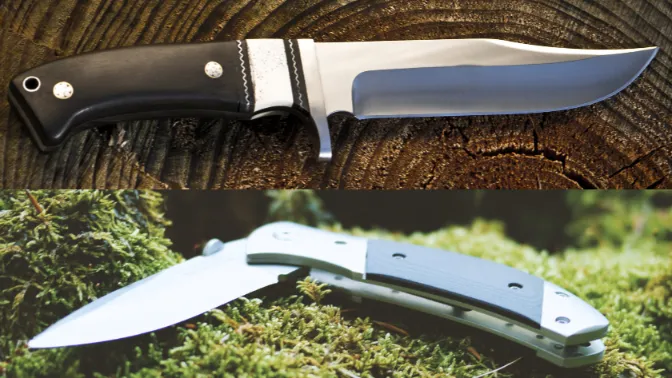
You’ve probably noticed that we presented the best fixed and folding knives in our ranking. That’s because both options have their own advantages and disadvantages.
If you’re venturing into rugged, remote areas where your knife might see heavy use, such as cutting through thick vegetation or even chopping small branches, a fixed blade will serve you best.
On the other hand, if you’re sticking to well-trodden paths and value convenience and light packing over all else, a folding knife is your ideal choice.
Fixed Blade Knives
With no moving parts, fixed knives boast a robustness that’s hard to beat. Here’s why they might just be your go-to for hiking:
- Durability: A fixed blade knife is built to take on tough tasks. Whether it’s cutting through thick brush or preparing wood for a fire, its solid construction can handle more pressure without breaking.
- Reliability: With no joints or mechanisms, there’s less that can go wrong. When you’re out in the wilderness, having a tool you can depend on is priceless.
- Ease of Cleaning: After a day of use, fixed blade knives are simpler to clean since there are no crevices for dirt and grime to hide in.
However, the trade-off is size and weight. Fixed blades tend to be bulkier and might require a sheath, making them a bit more challenging to carry around.
For example, the Gerber StrongArm knife tops our ranking of the best knives for hiking, but you must take into account that it weighs 10.9 ounces and that’s pretty much the same as carrying two iPhone 11s.
Folding Knives
On the flip side, folding knives offer a compact and convenient alternative. They’ve become a favorite for many hikers due to their portability:
- Compactness: Easily tucked into a pocket or attached to a belt, folding knives won’t weigh you down or take up much space in your pack.
- Safety: The blade tucks away when not in use, reducing the risk of accidental cuts.
- Versatility: Many folding knives like the Swiss Army Huntsman Knife come with additional tools like screwdrivers or bottle openers, making them multifunctional companions on the trail.
But remember, the convenience of folding knives comes with a caveat. Their moving parts and locking mechanisms introduce potential points of failure, and they may not stand up to the more demanding tasks as well as a fixed blade.
Conclusion
I’m genuinely thrilled you stuck with me all the way through. It tells me you’re serious about gearing up with not just the obvious essentials, but also those tools that might not scream for attention at first glance.
Yet, as we’ve discovered, these are the very tools that could be your lifeline in a pinch or simply make your life on the trail much easier.
Every knife we’ve discussed in this guide holds the promise of reliability, durability, and, most importantly, peace of mind. You can’t go wrong with any of them.

Lukas Heller
Hey there! I’m Lukas, co-founder of BigfootHiking.com, alongside my adventurous wife Martha. Originally from Germany, I landed in Phoenix, Arizona, in 2015, where I’ve been scouting out new trails ever since (though they’re getting scarce!). By day, I’m a software developer, but my heart belongs to hiking – I’m always plotting our next trip. When I’m not coding or on the trails, you’ll find me hanging out with our Pit Bull, Zeus.



